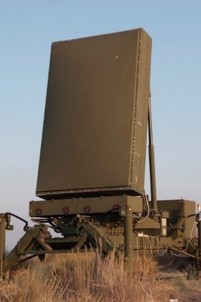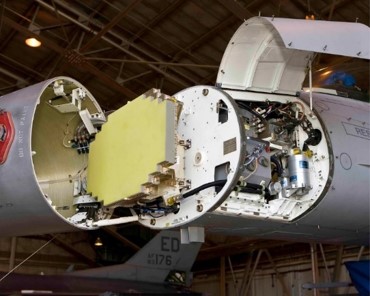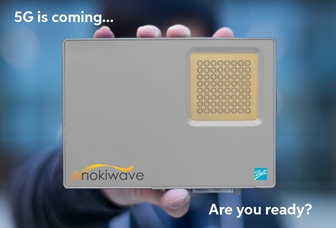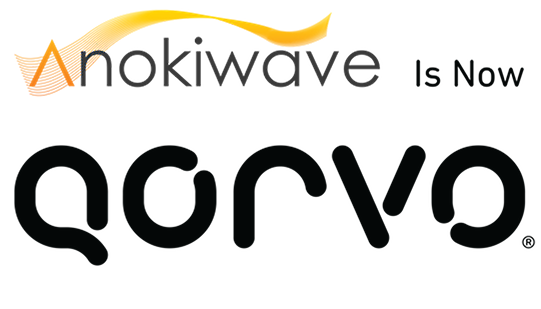The Evolution of the Active Antenna IC
 |
David Corman |
|---|---|
|
|
|
We say it all the time – 5G is no longer a figure far off in the distance. It’s upon us. But there’s no denying the years of iteration and learning from other industries it took to get us to this point in the mmW revolution.
Let’s take a look back at how the heart of 5G technology, the mmW Active Antenna IC, has evolved across key markets over the past decade.
Aerospace & Defense
The A&D industry pioneered the use of Active Antenna ICs in high frequency bands. The work done in this space truly set the groundwork for Anokiwave’s designers and engineers when we set out to pioneer IC solutions for the mmW market.
 To start, we interviewed 55 companies, collecting data on the problems they were facing and improved features they wanted to see in an IC. Through this close work and continuous feedback, we built the RADAR beam steering IC family – the first X-band core ICs on the market. With four different parts, it was the only one of its kind in the world at the time. Slowly but surely, the ICs were integrated into A&D systems and companies began reaping the benefits.
To start, we interviewed 55 companies, collecting data on the problems they were facing and improved features they wanted to see in an IC. Through this close work and continuous feedback, we built the RADAR beam steering IC family – the first X-band core ICs on the market. With four different parts, it was the only one of its kind in the world at the time. Slowly but surely, the ICs were integrated into A&D systems and companies began reaping the benefits.
Today Anokiwave has a selection of other plug-and-play products that complement the RADAR ICs, including the AWMF-0106 front end ASIC.
SATCOM
SATCOM has experienced a particularly interesting IC growth trajectory, with tons of capacity for infrastructure deployment in space. These satellites can handle a large volume of users and data rates, as evidenced through airplanes beaming high speed internet to mobile markets.
 While it seemed end user terminals offered the most promise for growth initially, the fixed market has been faster moving in IC development. Receiver parts in the K-band spectrum have proved highly functional for downlink receiving and beam steering.
While it seemed end user terminals offered the most promise for growth initially, the fixed market has been faster moving in IC development. Receiver parts in the K-band spectrum have proved highly functional for downlink receiving and beam steering.
Anokiwave offers a family of beam steering Active Antenna ICs for SATCOM, with readily-deployable chips in the Ka and Ku-bands.
5G
Learnings from the A&D and SATCOM markets have been applied to the fast and furious 5G market. Our team has seen the importance of working directly with end users to fully understand what their pain points are and what they really want in an IC, so we can evolve architectures accordingly. This allows us to build a product that’s effective immediately for mmW 5G applications.
 The AWMF-0129-IK is a great example of how we work in the trenches with customers. We entered a partnership with Ball Aerospace, selling complete Active Antennas–not just the IC behind it. Building this complete product helped educate the 5G industry about what our parts can do, in a way that made performance actually measurable.
The AWMF-0129-IK is a great example of how we work in the trenches with customers. We entered a partnership with Ball Aerospace, selling complete Active Antennas–not just the IC behind it. Building this complete product helped educate the 5G industry about what our parts can do, in a way that made performance actually measurable.
We’ll continue working with customers to build impactful ICs and supporting hardware for mmW, doing our part to help the telecom industry reach 5G network deployment by 2019. As we’ve said before, the last mile will be the first in this journey through advances in fixed wireless–the devices right outside of our homes providing access to WiFi and cable.
In a big step forward towards this last mile, evidenced by the recent 39 GHz spectrum allocations for 5G fixed wireless, and the large investments in the spectrum by telcom companies, Anokiwave recently announced the world’s first commercially available 39 GHz 5G Active Antenna ICs. The products are highly integrated silicon ICs packaged in a wafer level chip scale package (WLCSP), easily fitting within the typical 3.8 mm lattice spacing at 39 GHz. The ICs are controlled via Anokiwave's patented SPI interface and feature ESD protection on all pins. They are in production and ready for deployment today. Click here to learn more.
At Anokiwave, we're continuing to do our part to make 5G a reality. Anokiwave is leading the mmW A&D, SATCOM, and 5G markets with our silicon Core ICs for Active Antenna applications. Interested in joining us? Check out some of our career openings.

